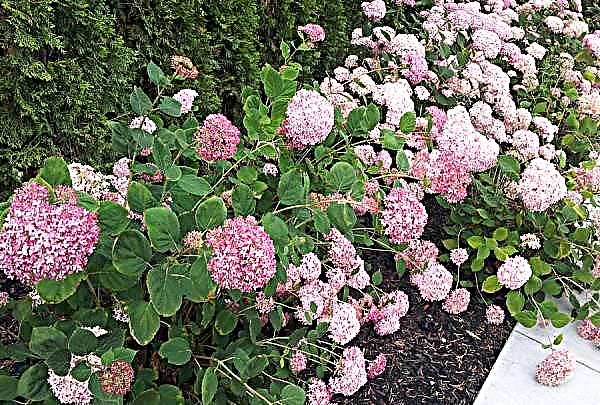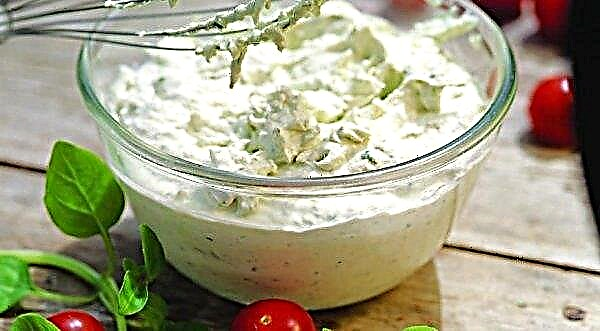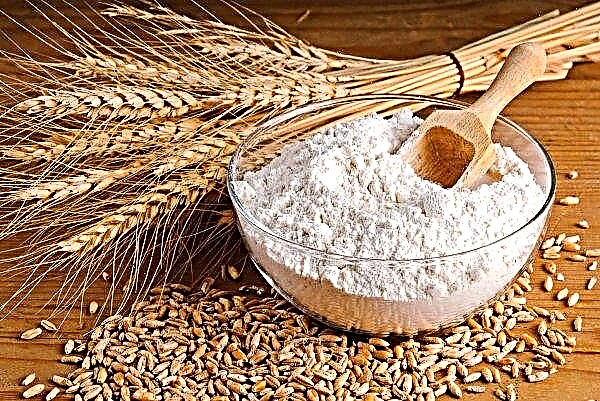A beautiful houseplant, popularly referred to as "Male Happiness", is sometimes suddenly covered with alarming brown spots. The reasons for their appearance on the foliage of anthurium and on how to fix the problem will be discussed in the article.
Causes of brown patches on the leaf plate
Often the appearance of brown spots on the leaves of anthurium provokes improperly organized temperature and watering the plant. Also, the problem may arise due to the constant stay of the flower in the sun, draft, with poorly selected soil and in connection with the attack of insects.
Did you know? It is believed that “Male happiness” not only affects men's health and, absorbing negative energy, brings harmony and harmony to the home, it is also able to heal the air by absorbing harmful substances such as toluene and xylene.
Exposure to direct sunlight
Despite the tropical origin of Anthurium, it does not withstand direct sunlight. If small brown spots are found on the foliage, then it can be sunburn. They appear after watering, when drops of water that fall on the leaves under the sun's rays turn into mini-lenses that concentrate solar energy and burn the leaf surface. In this regard, anthurium is best grown in light partial shade, bearing in mind that the lack of lighting also adversely affects the condition of the flower.
Draft
Anthurium is sensitive to drafts - because of them, the leaves of the plant become covered with brown spots, which then turn black, and the flower withers.
Unsuitable room temperature
The heat regime for flower growth is between + 18 ° C and + 28 ° C. And if exceeding the norm does not have serious consequences for anthurium, then a decrease in temperature is detrimental, which is manifested in the inhibition of its growth and the appearance of spots on the foliage.
Soil calcium salts
When watering a flower with hard water, calcium salts accumulate in the soil. This is manifested in the form of limescale on the surface of the substrate and on the walls of the pot. Excess calcium in the soil is reflected in the foliage of anthurium, which is covered with brown spots. To clean the land of excess salts, you can remove the topsoil, replacing it with fresh soil mixed with peat or humus. For small containers, washing the substrate is suitable, for which soft water is poured into the pot, the volume of which is equal to the volume of the pot. Water, passing through the substrate and going out through the drainage holes, carries with it most of the harmful salts accumulated in the soil. In this case, it must be ensured that after washing there is no liquid left in the pan.
For small containers, washing the substrate is suitable, for which soft water is poured into the pot, the volume of which is equal to the volume of the pot. Water, passing through the substrate and going out through the drainage holes, carries with it most of the harmful salts accumulated in the soil. In this case, it must be ensured that after washing there is no liquid left in the pan.
Important! In order to avoid the accumulation of excessive salts in the substrate, the plant should be watered only with soft water, preferably rain.
Shields
Yellow-brown spots appear on the leaf surface of the anthurium, which results in the absorption of juice from the leaves, deadening their significant areas, leading to the death of the affected foliage.
How to fix the problem
Brown spots on the deciduous surface of the flower can also indicate the appearance of root rot in the root system. If, after removing an earthen coma from the container, the roots in it instead of a light color have a brownish-black hue, then the root system is affected by a fungus or other putrefactive microorganisms. To fix the problem:
To fix the problem:
- Remove soil residues from the root system.
- Remove rotten roots with a knife, leaving healthy, light roots.
- Sprinkle places of slices with crushed charcoal.
- Cut damaged brown spots and dried leaves on the flower bush.
- Treat the plant with fungicides.
- Transplant the flower into a fresh substrate and a new container, which before this is thoroughly disinfected.
To combat young scabies, plants and the upper part of the soil are treated with a solution of warm water, grated garlic and laundry soap. It is also useful to disinfect the substrate with a solution of potassium permanganate, which not only disinfects the soil, but also fertilizes it. On adults of the scale insects, covered with shields, such means, as well as insecticides of contact action of industrial production do not work. They are eliminated manually with a sponge or soft toothbrush dipped in a dishwashing detergent solution. You can also resort to the treatment of plants with systemic insecticides in the form of "Confidor" or "Actara", 2 ml of which are dissolved in a bucket of water and sprayed onto the plant using a fine spray.
On adults of the scale insects, covered with shields, such means, as well as insecticides of contact action of industrial production do not work. They are eliminated manually with a sponge or soft toothbrush dipped in a dishwashing detergent solution. You can also resort to the treatment of plants with systemic insecticides in the form of "Confidor" or "Actara", 2 ml of which are dissolved in a bucket of water and sprayed onto the plant using a fine spray.
Plant Care Rules
Competent care for anthurium consists in proper watering and fertilizing with fertilizers.
Watering
In a natural environment, a plant requires increased humidity of air and soil for development, so the same conditions must be created in the room where the anthurium grows. During the period of active growth, the flower is watered every 3 days, supplementing it with daily spraying or wet wiping of the foliage. In winter, watering intensity is reduced to 1 time per week. For irrigation use settled or filtered warm water. The plant is sprayed with the same water, trying not to wet the flowers, which do not tolerate water entering them.
Important! Anthurium tolerates an excess of moisture as painfully as the drying of the substrate, so stagnation of water in the pan should be avoided.
Fertilizer
During the growing season, especially during flowering, anthurium needs to be fed with fertilizers. In the spring, leaving the resting phase, the plant begins to build up green mass, for which it requires a lot of nitrogen. The best source of this element is organic fertilizers in the form of a mullein solution or bird droppings.
Video: How and what to fertilize anthurium
In the phase of budding and blooming of flowers, that is, from May to early October, anthurium requires fertilizers with a predominant content of phosphorus and potassium. Top dressing in doses specified by the manufacturer is carried out under the root of the plant and combined with watering, which improves the digestibility of fertilizers and prevents burns of the delicate root system of the flower.
Other problems with growing anthurium
In addition to external factors, the plant is also affected by internal factors related to age. As they grow older, the flowers become smaller and their color fades. The trunk below is exposed, losing dying foliage. In this case, the anthurium is rejuvenated with a stem with 3 aerial roots. Sometimes the plant refuses to bloom. More often it is connected with:
- lack of lighting;
- dry air in the room;
- illiterate watering;
- temperature differences.
 In addition to shields, anthurium weakened by improper care can be attacked by other pests like:
In addition to shields, anthurium weakened by improper care can be attacked by other pests like:- spider mite;
- aphids;
- mealybug;
- thrips.
Did you know? It is believed that in addition to helping to strengthen health, anthurium is able to attract money, love and good luck in business to the owners during the flowering period.
If the spectacular appearance of anthurium is clouded by the appearance of dark spots on its foliage, this is almost always due to flaws in the florist in caring for the plant. Compliance with the rules and requirements for care, the organization of the necessary conditions, guarantee the health and beautiful appearance of the flower.












